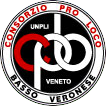GEOGRAPHY
The town of Castagnaro, with its surface of 34.74 km², is located at an average altitude of 14 m above sea level. It is 55 km away from Verona and it is situated at the southern extremity of its territory, on its border with the province of Rovigo. Its only fraction is Menà di Vallestrema. There is a train station of the secondary railway line Verona – Rovigo. It borders the comuni of Badia Polesine, Giaccano con Baruchella (province of Rovigo), Terrazzo, and Villa Bartolomea (province of Verona).
ETYMOLOGY
The name Castagnaro derives from the chestnut trees (in Italian castagno) common in the area, four of which are still well remembered by its inhabitants, since they were placed at both entrances to the town. These trees have now disappeared, but they have been recently planted again in the garden of the school, and in a public green area.
HISTORY
Some archaeological findings on the territory of Castagnaro date the presence of settlements to the second millenium b.C. These settlements remained during the Roman era as well, due to the fertility of the land. In 589 the whole area was hit by consistent floods, which caused the river Adige to change the direction of its flow, which conveyed in one of its secondary branches. Since then, the core of the town of Castagnaro was moved on the riverside. There it developed throughout the following centuries expanding on the right bank of the Canale Castagnaro, one of the main waterways between the Adriatic Sea, the Adige and the river Tartaro, during the Venetian era. In 1387 the town witnessed a ferocious conflict between the troops of Verona and Padova. These were victorious, successfully blocking the territorial expansion of the Scaligeri, sanctioning their forthcoming demise. In 1791, a solid supporting stonework known as Diversivo Castagnaro, was built to safely drain the waters of the Adige. During the Austrian domination a project was started to reclaim the lands of the Grandi Valli Veronesi, and it was completed during the fascist period, significantly increasing the amount of cultivable soil. The year 1850 marked the end of the majestic centenary chestnut tree which, according to the oral tradition, gave the town its name, even though reliable studies have proved the name to date back to 1185. Castagnaro is famous for its band, that in 1912 won the International Band Competition in Paris and nowadays continues its activity with commitment and dedication.
ART
In the town emblem it is possible to observe something widely known as “the bridge of the Rosta”, which is actually not a bridge but a mighty dam built towards the end of the1700s, in order to control the waters that from the Adige were flowing into an adjacent deep and swirly channel, the Canale Castagnaro. According to both tradition and historical exhibits the birth of this channel was caused by a flood in 1438. However, further research shows that a less consistent watercourse was already flowing some centuries earlier. Both the flood and a military event between Milano and Venezia were responsible for the broadening of the riverbed. The channel’s flowing water, both a blessing and a curse for the citizens of Castagnaro, was finally put under control in 1791. The impressive structure was designed by A.M. Lorgna and built under the leadership of the engineer Canova in 1830, as recommended by Paleocapa. The channel Castagnaro was finally closed in 1845. In the fraction Menà there is an oratory dated 1500, a work of both historical and artistic value that displays some precious frescos attributable to the school of Caroto. Nowadays, the whole apsis remains covered in adequately preserved frescos picturing figures of great elegance. The little town of Menà is known for its three churches, all located in the small square. One dedicated to Sant’Anna from the 1300s, a second one, now in precarious conditions, built during the first years of the 1800s, and a third modern one, built in 1972 by the architect Oreste Valdinoci and awarded for its elegance between the other modern holy sites of Veneto. The parish church of Castagnaro hosts two precious altarpieces: both from the 1500s, one portraying San Francesco, and the other credited to Battista del Moro.
Token of faith, religion and local culture, are the 13 wayside shrines positioned along the streets of the town. Particularly interesting is the historical centre with Villa Bianchini, the old Town Hall, and house Scolari, typical examples of nobility countryside residences from the first half of the 1800s, and the oratory of Sant’Agostino, in Località Sabbioni.
ECONOMY
The economy is mainly agricultural. Common cultivations include wheat, corn, soy, beetroot, apples, pears, cabbages, radicchio, leek, Savoy cabbage, and spinach. Handicraft is flourishing, especially in the field of artistic furniture, while the industrial settlements are distinguished by the presence of agroindustrial and commercial companies.
